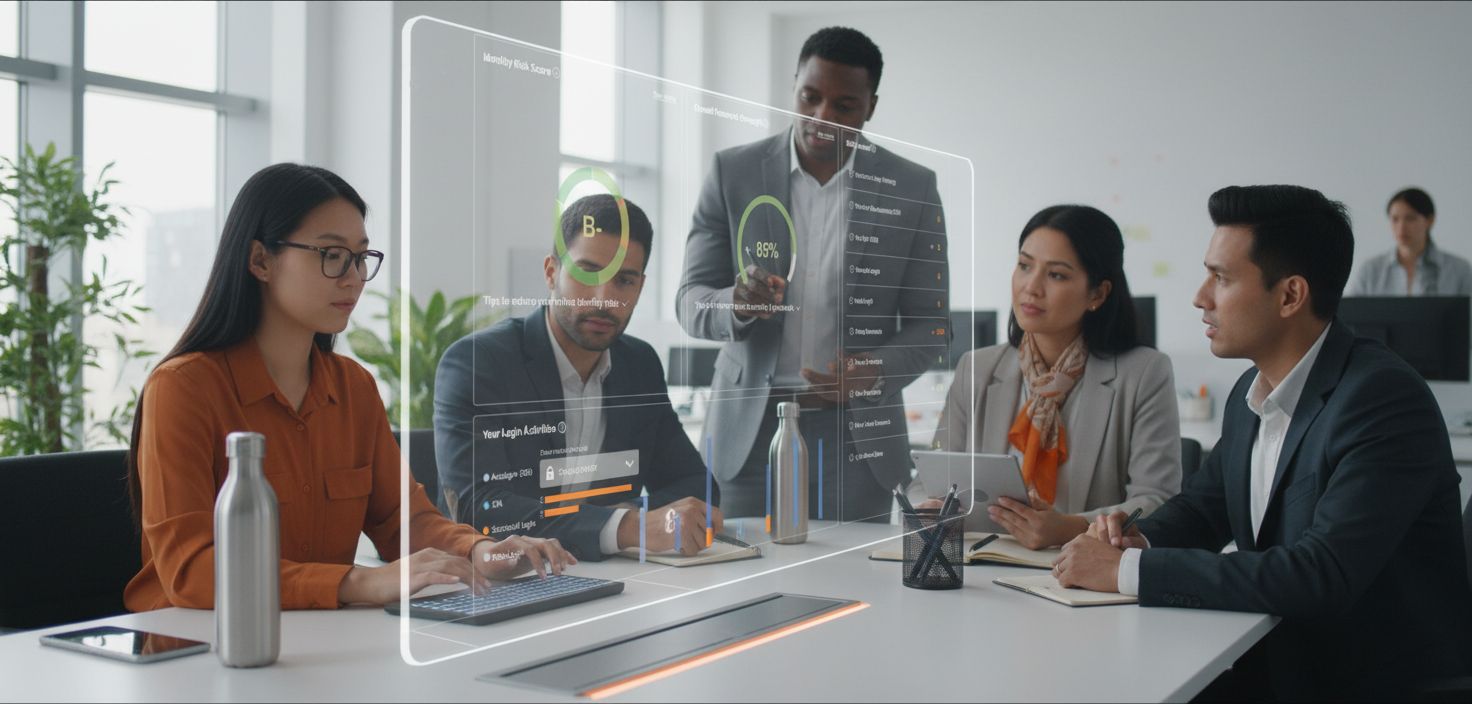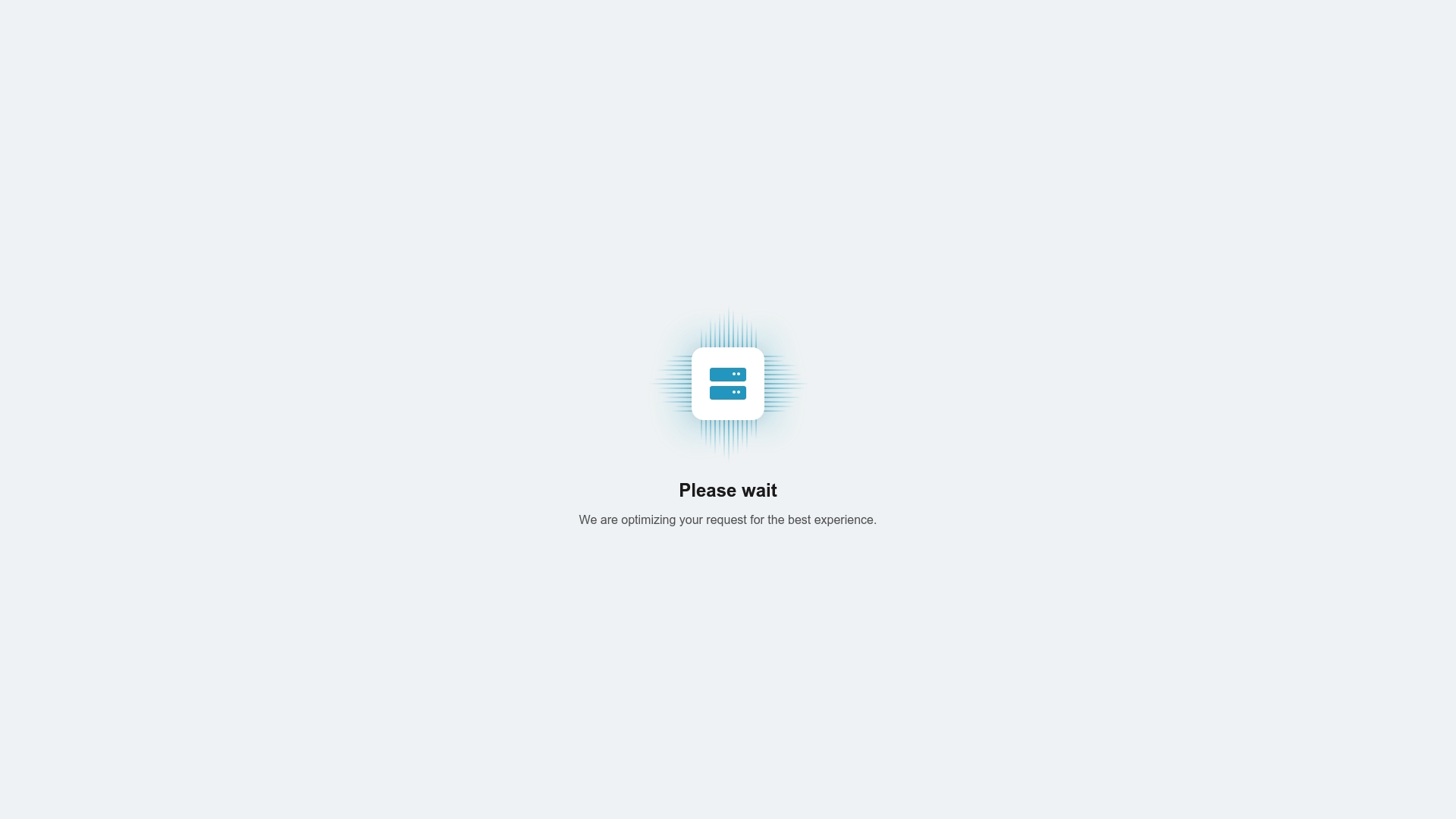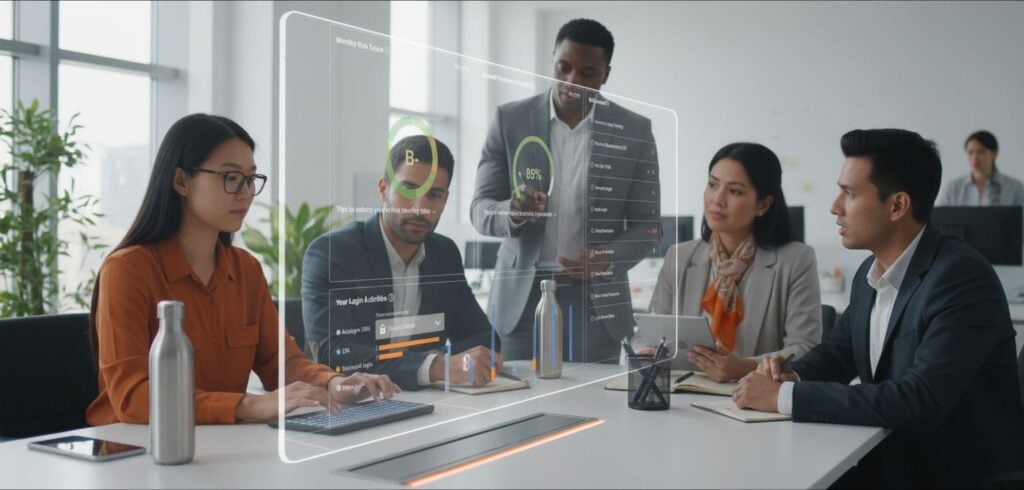7 Essential Password Security Tips 2025 for Every Organization

Did you know that over 60% of people reuse the same passwords across different accounts? This everyday shortcut puts your sensitive data and digital identity at serious risk. Cybercriminals only need to crack one password to gain access to countless systems. Protecting yourself calls for smart, consistent habits that make unauthorized access much harder and keep your private information truly private.
Quick Summary
| Takeaway | Explanation |
|---|---|
| 1. Use Strong, Unique Passwords | Create complex passwords for each account to prevent breaches. |
| 2. Enable Multi-Factor Authentication | Use MFA to block automated attacks and secure accounts. |
| 3. Regularly Update Passwords | Change passwords every 3 to 6 months for optimal security. |
| 4. Recognize Phishing Attempts | Learn to identify red flags in suspicious communications. |
| 5. Educate Teams on Security Practices | Continuous training helps foster a security-conscious culture. |
1. Use Strong and Unique Passwords for All Accounts
Your digital security starts with the most fundamental defense mechanism: creating robust passwords that act as impenetrable barriers against potential cyber threats. The reality is stark and simple. Weak passwords are an open invitation to cybercriminals.
According to research from online security networks, over 60% of users continue to reuse passwords across multiple accounts, creating a dangerous vulnerability that attackers can easily exploit. Imagine a scenario where one compromised password gives hackers access to multiple systems. Terrifying, right?
Strong passwords are your first line of digital defense. They should be complex, random strings that defy predictability. Security experts recommend generating passwords that are:
- At least 12 to 16 characters long
- Include a mix of uppercase and lowercase letters
- Incorporate numbers and special characters
- Completely avoid dictionary words or personal information
Think of your password like a unique key that opens only one specific lock. If someone copies that key, they cannot unlock other doors. Similarly, each account should have a completely unique password. This strategy prevents credential stuffing attacks, where hackers use breached login details from one platform to access another.
Practical implementation is straightforward. Use password managers that generate and securely store complex, random passwords. These tools create credentials that would take centuries for computers to crack. They eliminate the mental burden of remembering multiple complicated passwords while dramatically enhancing your security posture.
Remember: Your digital identity is valuable. Treat your passwords like the critical security assets they are. One strong, unique password can mean the difference between total system security and complete digital vulnerability.
2. Enable Multi-Factor Authentication Everywhere
Multi Factor Authentication (MFA) is like having a security guard for your digital accounts who demands multiple forms of identification before granting access. It transforms your login process from a simple password checkpoint into a robust security checkpoint.
Research from technology security experts reveals a stunning statistic: MFA can block over 99.9% of automated attacks. This means implementing this strategy creates an almost impenetrable barrier against cybercriminals attempting to breach your systems. Current adoption rates show promising trends with 78% of personal accounts and 73% of work accounts already utilizing MFA in 2024.
How MFA works is straightforward yet powerful. When you log into an account, instead of just entering a password, you must provide additional verification. This could be:
- A unique code sent to your mobile phone
- A biometric scan like fingerprint or facial recognition
- A physical security key
- An authentication app generating time sensitive codes
Think of MFA like a bank vault. A password is just the first lock. MFA adds multiple reinforced steel doors that each require different keys. Even if someone discovers your password, they cannot access your account without the additional verification.
Practical implementation starts with systematically reviewing all your critical accounts email, financial platforms, cloud storage, and work systems. Most major services now offer MFA as a standard security feature. Look for terms like “two factor authentication” or “additional security” in your account settings.
For organizations, universal MFA adoption is no longer optional. It is a fundamental requirement for protecting sensitive information and preventing unauthorized access. The minimal inconvenience of an extra authentication step far outweighs the potential catastrophic consequences of a security breach.
3. Update Passwords Regularly and Avoid Reuse
Passwords are like digital locks that need periodic maintenance. Think of them as keys that can wear down or become vulnerable over time. Modern cybersecurity approaches require strategic password management that goes beyond simple periodic changes.
Research indicates that many users never update passwords even after known security breaches. This passive approach leaves critical accounts exposed to potential unauthorized access. According to network security experts, updating passwords for critical accounts every 3 to 6 months can significantly reduce potential attack windows.
Password rotation requires a smart strategy. Traditional approaches of mandatory monthly changes often backfire. Users typically make predictable modifications that hackers can easily anticipate. Instead, focus on:
- Changing passwords immediately after suspected compromise
- Monitoring account activity for unusual patterns
- Using password managers to track and generate unique credentials
Learn more about advanced authentication strategies in our Role of Multi-Factor Authentication Explained resource. Understanding how authentication works can help you develop more robust security practices.
Password reuse is another critical vulnerability. Using the same password across multiple accounts creates a domino effect where one breach can compromise your entire digital ecosystem. Each account should have a unique, complex password that cannot be easily guessed or replicated.
Practical implementation means developing a systematic approach to password management. Set calendar reminders for critical accounts. Use password management tools that generate and store complex passwords securely. Most importantly, stay vigilant and proactive about your digital security landscape.
4. Recognize and Avoid Phishing Attempts
Phishing represents a digital predator lurking in your email inbox, waiting to trick you into revealing sensitive information. These sophisticated scams are designed to look legitimate while secretly aiming to steal your credentials or infect your systems.
According to cybersecurity experts, phishing is frequently the initial attack vector for major security breaches. The key to defense is building organizational awareness and developing a critical eye for suspicious communication.
Red flags that signal a potential phishing attempt include:
- Generic or impersonal greetings
- Urgent or fear inducing language demanding immediate action
- Suspicious links or unexpected email attachments
- Poor grammar or unprofessional formatting
- Requests for confidential information
Practical defense strategies involve training yourself to pause and verify. Hover over links before clicking to preview their actual destination. Check sender email addresses carefully for slight misspellings or unusual domains. When in doubt, contact the supposed sender through a verified communication channel.
Employees should feel empowered to report suspicious communications without fear. Creating a transparent reporting culture transforms your entire organization into a human firewall against potential cyber threats.
Remember that phishing attempts are constantly evolving. Cybercriminals use increasingly sophisticated techniques to appear legitimate. Staying informed and maintaining a healthy skepticism is your best defense. Treat unexpected digital communication like an unknown package never open it without careful verification.
5. Utilize Encrypted Password Managers Safely
Password managers are like secure digital vaults that transform how you protect and manage your online credentials. They do more than just store passwords they generate, encrypt, and protect your digital identity with military grade security.
Research shows users of password managers are significantly less likely to experience identity or credential theft. These tools generate complex unique passwords for each account eliminating the dangerous habit of password reuse that makes you vulnerable to widespread attacks.
Critical features to look for in a password manager include:
- End to end encryption
- Zero knowledge architecture
- Multi factor authentication support
- Secure password generation capabilities
- Cross platform synchronization
Learn more about the fundamentals in our What is Password Management? Understanding Its Importance resource. Understanding how these systems work can dramatically improve your security approach.
When selecting a password manager, prioritize reputable providers with strong security track records. Your master password becomes the key to this vault so create it carefully. Make it long, complex, and something only you would know. Enable multi factor authentication on the password manager itself to create an additional layer of protection.
Think of a password manager like a digital security guard who never sleeps. It generates impossible to crack passwords, stores them securely, and auto fills them across your devices. The minimal effort of setup translates into comprehensive protection against potential cyber threats.
6. Monitor for Dark Web Credential Leaks
The dark web is a hidden marketplace where cybercriminals trade stolen credentials like digital commodities. Imagine your organization’s login information being sold for as little as $10 without your knowledge a chilling reality that demands proactive monitoring.
Statistics reveal a sobering truth: credential based attacks feature in 77% of web application breaches. This means your employee credentials are prime targets for malicious actors looking to infiltrate your systems. Dark web monitoring transforms from an optional security measure to a critical defensive strategy.
Key reasons to implement dark web monitoring include:
- Early detection of compromised credentials
- Proactive breach prevention
- Compliance with security standards
- Protecting organizational reputation
- Minimizing potential financial losses
Learn more about comprehensive security approaches in our Password Security: Everything You Need to Know resource. Understanding the broader context of digital security can help you develop more robust protection strategies.
Effective dark web monitoring involves continuous scanning of underground digital markets. Advanced monitoring tools can alert your security teams the moment any organizational credentials appear in these illicit spaces. Think of it like having a digital detective constantly watching for signs of potential intrusion.
The cost of monitoring is minimal compared to the potential damage of a successful breach. By treating your credentials as valuable assets that require constant protection, you create a proactive security culture that makes it significantly harder for cybercriminals to succeed.
7. Educate Teams on Secure Password Practices
Cybersecurity is no longer just an IT department responsibility. It is a company wide mission that requires every team member to become a proactive digital defender. Ongoing education transforms employees from potential security vulnerabilities into your organization’s strongest protective shield.
Research reveals a stark reality: despite numerous awareness campaigns, poor password habits continue to persist. Top stolen passwords remain embarrassingly simple, demonstrating a critical need for continuous and engaging security training.
Effective cybersecurity education should cover:
- Recognizing social engineering tactics
- Understanding password complexity requirements
- Practicing safe browsing behaviors
- Learning to report suspicious activities
- Implementing multi factor authentication
For practical collaboration strategies, explore our Secure Password Sharing Steps for Safe Collaboration resource. Understanding how to securely share credentials can dramatically reduce organizational risk.
Building a robust security culture requires more than annual training sessions. It demands consistent communication, interactive workshops, and real world simulation exercises. Gamify the learning experience by creating scenarios that help employees understand the consequences of weak security practices.
Think of cybersecurity training like ongoing fitness for your digital immune system. Regular check ups, consistent practice, and adaptive learning strategies will help your team develop muscle memory for secure digital behaviors. The goal is not just compliance but creating a genuine understanding that transforms security from a chore into a shared organizational value.
Below is a comprehensive table summarizing the key digital security strategies and practices discussed in the article.
| Strategy | Key Points & Actions | Benefits/Outcomes |
|---|---|---|
| Strong, Unique Passwords | Use complex, 12-16 character passwords with a mix of letters, numbers, and symbols; avoid reuse. | Protects against password-based attacks like credential stuffing. |
| Multi-Factor Authentication (MFA) | Implement additional verification steps such as codes or biometric scans. | Blocks over 99.9% of automated attacks. |
| Regular Password Updates | Change passwords every 3 to 6 months, especially after breaches. | Reduces vulnerability and potential attack windows. |
| Phishing Avoidance | Recognize generic greetings, urgent language, suspicious links. | Prevents unauthorized access through deceitful attempts. |
| Encrypted Password Managers | Use tools with end-to-end encryption and MFA support. | Safeguards against identity theft and credential theft. |
| Dark Web Monitoring | Continuously scan for compromised credentials being sold. | Provides early detection and breach prevention. |
| Team Education | Train employees in secure practices and recognizing threats. | Enhances overall organizational security culture. |
Take Control of Your Organization’s Password Security with Proven Solutions
Are you tired of worrying about weak passwords, rising phishing attempts, and the constant threat of data breaches? The article above highlights how careless password habits and unmanaged digital identities can expose your business to costly cyberattacks. Modern threats such as credential stuffing, phishing, and dark web leaks make your organization’s digital health more fragile than ever. You cannot afford to rely on manual approaches or outdated tools when your sensitive data is at risk. Now is the time to put robust password management and advanced security features in place, just like those discussed in the article.

Secure your future with technology built for real-world risks. Visit LogMeOnce now and experience the benefits of automated password management, passwordless MFA, cloud encryption, and dark web monitoring. Want to see how secure password sharing really works for your team? Explore our Secure Password Sharing Steps for Safe Collaboration. Compare features and start your free trial today, so your business can finally regain peace of mind. Don’t wait until a breach reveals your weaknesses. Give your team the strongest shield possible with LogMeOnce.
Frequently Asked Questions
What are the key components of a strong password according to the 7 Essential Password Security Tips 2025 for Every Organization?
A strong password should be at least 12 to 16 characters long, mixing uppercase and lowercase letters, numbers, and special characters. Avoid using dictionary words or personal information that can be easily guessed.
How often should organizations update passwords to maintain security?
Organizations should update passwords for critical accounts every 3 to 6 months to minimize potential vulnerabilities. Set reminders in your calendar to ensure this is done consistently.
What steps should I take to enable Multi-Factor Authentication (MFA) on accounts?
To enable Multi-Factor Authentication, navigate to your account settings and look for the security or authentication section. Choose MFA options like text codes or authenticator apps to add an extra layer of protection during logins.
How can employees recognize and report phishing attempts effectively?
Employees should be trained to look for red flags in emails, such as generic greetings, urgent requests, or suspicious links. Encourage them to pause and verify any unexpected communication by contacting the sender through a trusted method before responding.
Why is dark web monitoring important for organizations, and how can it be implemented?
Dark web monitoring is essential for early detection of compromised credentials, which can prevent security breaches. Implement monitoring by using tools that continuously scan dark web marketplaces for any signs of your organization’s credentials.
What are effective ways to educate teams about secure password practices?
Effective education involves ongoing training that covers recognizing phishing tactics, understanding password complexity, and safe browsing behaviors. Schedule regular workshops and training sessions that engage employees and reinforce the importance of strong password security.





 Password Manager
Password Manager
 Identity Theft Protection
Identity Theft Protection

 Team / Business
Team / Business
 Enterprise
Enterprise
 MSP
MSP



